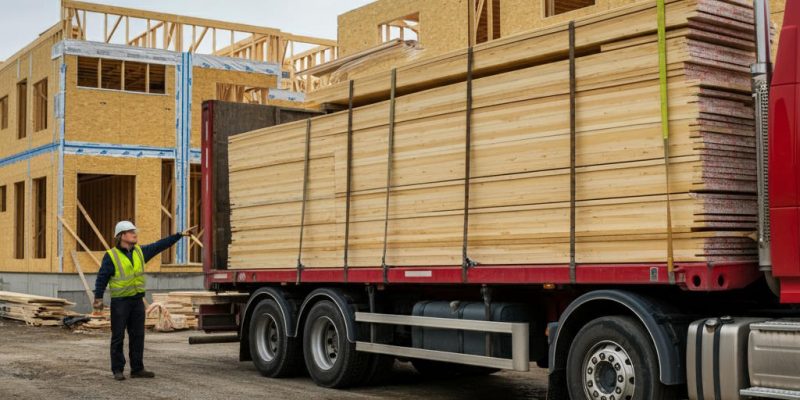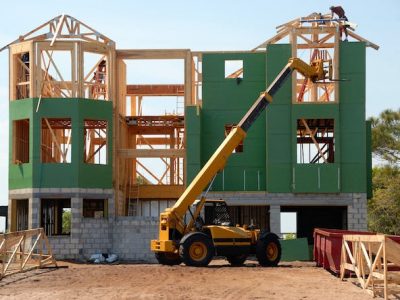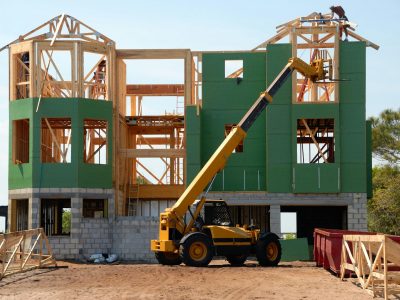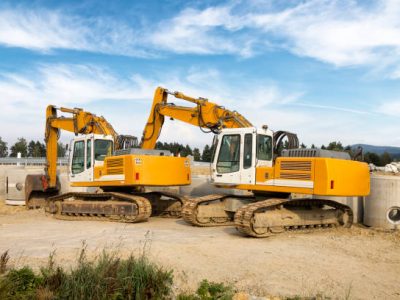Construction sites, whether you’re building a small home or a massive skyscraper, are dynamic environments where vehicles, machinery, and workers must coexist safely. If you have vehicles visiting your site to deliver materials, other people on the site might be called in to help direct them, or they need to be aware of where the vehicles are moving.
Surprisingly, small sites are actually as dangerous, if not more dangerous than big sites. Big sites tend to have safety protocols, whereas a small residential construction project probably has tight access, a rotating cast of tradespeople and no dedicated site foreman.
So, if you’re planning on building a house (or even just an extension), this article is as relevant for you as it is for someone building a massive factory.
Understanding and implementing proper vehicle movement protocols is crucial for preventing accidents and maintaining site safety. In this article, we’ve supplied easy-to-follow bullet points so that you can check your site for best practices in vehicle safety.
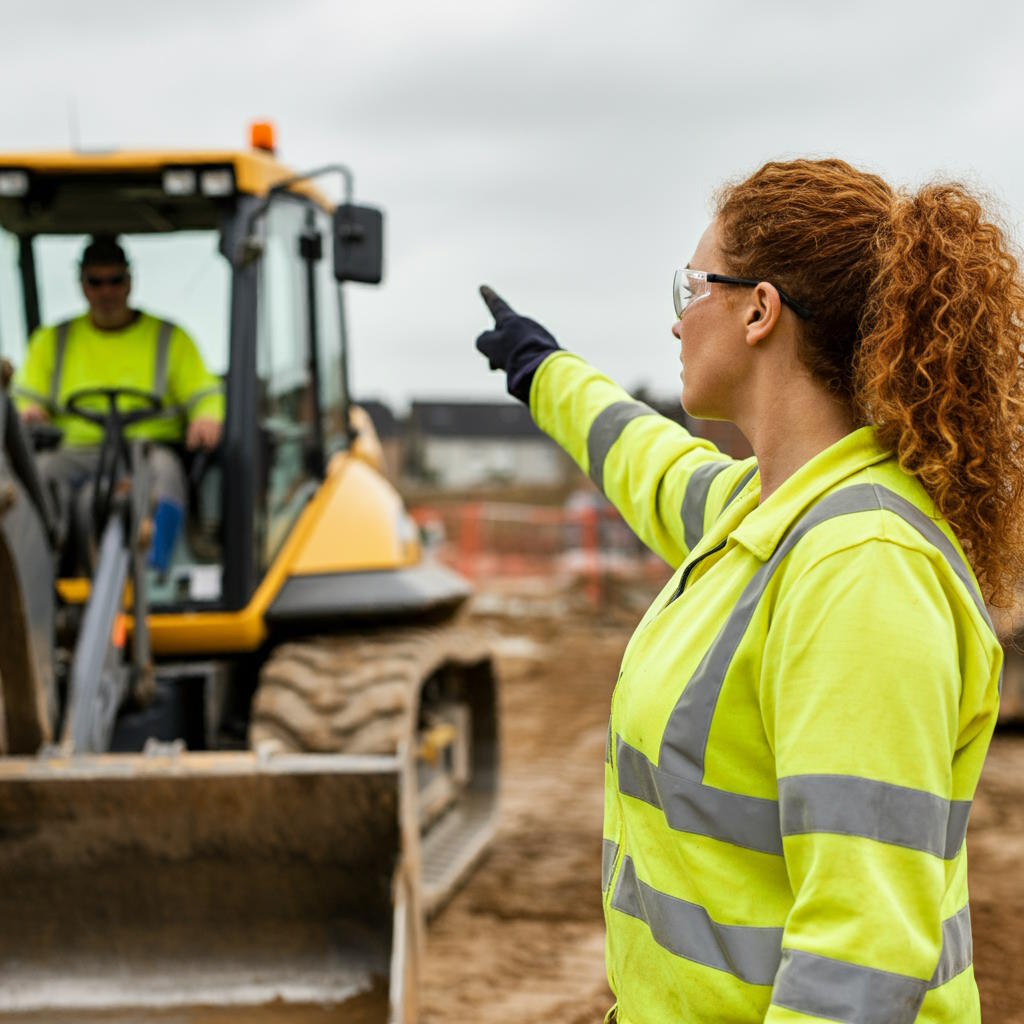
Site Hazards and Vehicle Movement Risks
Construction sites present numerous hazards that affect vehicle movements:
- Other vehicles and machinery operating in close proximity
- Pedestrian workers moving throughout the site (often with ear protection, which dulls their awareness of the engines of surrounding vehicles)
- Temporary storage of building materials and supplies
- Stationary plant and equipment
- Unstable or soft ground conditions
- Underground services and utilities
- Overhead obstacles including power lines and tree branches
- Changing weather conditions affecting ground stability and visibility
- Night work and low-light conditions
- Dust and noise affecting communication and visibility
Site Planning and Layout
Effective vehicle safety begins with proper site planning:
- Designated one-way systems where possible
- Separate entrance and exit points
- Dedicated loading and unloading zones
- Vehicle parking areas away from main work zones
- Turning circles marked for larger vehicles
- Clear signage throughout the site
- Well-maintained temporary roadways
- Adequate lighting for early morning or evening work
Communication and Awareness
All workers on site must be aware of significant vehicle movements, particularly during:
- Material deliveries
- Heavy machinery operations
- Excavation work
- Concrete pours
- Crane operations
- Site setup and breakdown phases
- Emergency situations
Workers should wear high-visibility clothing at all times to ensure they can be seen by vehicle operators. This is especially important during low-light conditions or adverse weather.
The Role of Spotters
Spotters play a crucial role in safe vehicle movements on construction sites. They assist drivers when:
- Visibility is compromised due to blind spots
- Weather conditions reduce visibility
- Multiple vehicles are operating in the same area
- Complex manoeuvres are required
- Reversing is necessary
- Working near excavations or overhead hazards
Spotter Training and Assignment
Anyone who might be a spotter must have some kind of spotter or vehicle guiding training (sometimes called marshalling). This role may need to be filled by different team members depending on workload and availability. Training should cover:
- Standard hand signals
- Understanding blind spots and dynamics for different vehicles
- Communication protocols
- Emergency procedures
- Site-specific hazards
- Personal safety while spotting
- Weather-specific considerations
- Night work procedures
- Communication equipment use
- Conflict resolution with drivers
- Risk assessment skills
Signal Systems and Safety Equipment
Drivers and spotters must agree on a clear system of hand signals before starting work. The most critical signals include:
- Emergency stop (this must be universally understood)
- Reverse
- Turn left/right
- Forward movement
- Distance indicators (how far to move)
- All clear signals
- Slow down signals
Spotters should be equipped with:
- High-visibility clothing with reflective strips
- Two-way radios for noisy environments
- Light wands for low-visibility conditions
- Appropriate PPE including safety boots and hard hat
- Emergency whistle or horn
Vehicle Types and Specific Considerations
Spotters must be familiar with various types of construction vehicles, including:
- Delivery trucks
- Forklifts
- Excavators
- Bulldozers
- Concrete trucks
- Mobile cranes
- Telescopic handlers (“telehandlers”)
- Dump trucks
- Mobile elevated work platforms
Each vehicle type has unique blind spots, manoeuvrability characteristics, and specific safety requirements that spotters must understand.
Traffic Management
When construction sites connect to public roads, proper traffic management becomes essential. This includes:
- Clear signage for site entrance and exit
- Designated waiting areas for vehicles
- Traffic control measures during peak delivery times
- Speed limits within the site
- Separate pedestrian walkways
- Wheel washing facilities to prevent mud on public roads
- Trained traffic management personnel for managing public traffic when needed
- Coordination with local authorities for large deliveries
Hazard Management
Physical barriers and markers should be used to:
- Cone off dangerous areas
- Mark underground services
- Identify overhead hazards
- Separate vehicle and pedestrian routes
- Protect stored materials and equipment
- Designate safe zones for pedestrians
- Mark excavation edges and trenches
- Identify maximum height restrictions
Daily Safety Measures
To maintain safe vehicle operations:
- Conduct daily vehicle inspections
- Hold regular toolbox talks on vehicle safety
- Review and update traffic management plans
- Monitor weather conditions
- Check ground conditions
- Verify all safety equipment is functional
- Ensure adequate lighting is maintained
- Review and record near-misses
- Update route plans as site conditions change
What should you do on your building site?
Safe vehicle movements on construction sites require a combination of clear protocols, effective communication, and well-trained personnel. Ensuring all workers understand their roles in maintaining site safety and following established procedures can significantly reduce the risks associated with vehicle movements. Regularly reviewing and updating these practices helps maintain their effectiveness and ensures they remain relevant to changing site conditions. Remember that safety is everyone’s responsibility, and successful vehicle management requires ongoing commitment from all site personnel.


